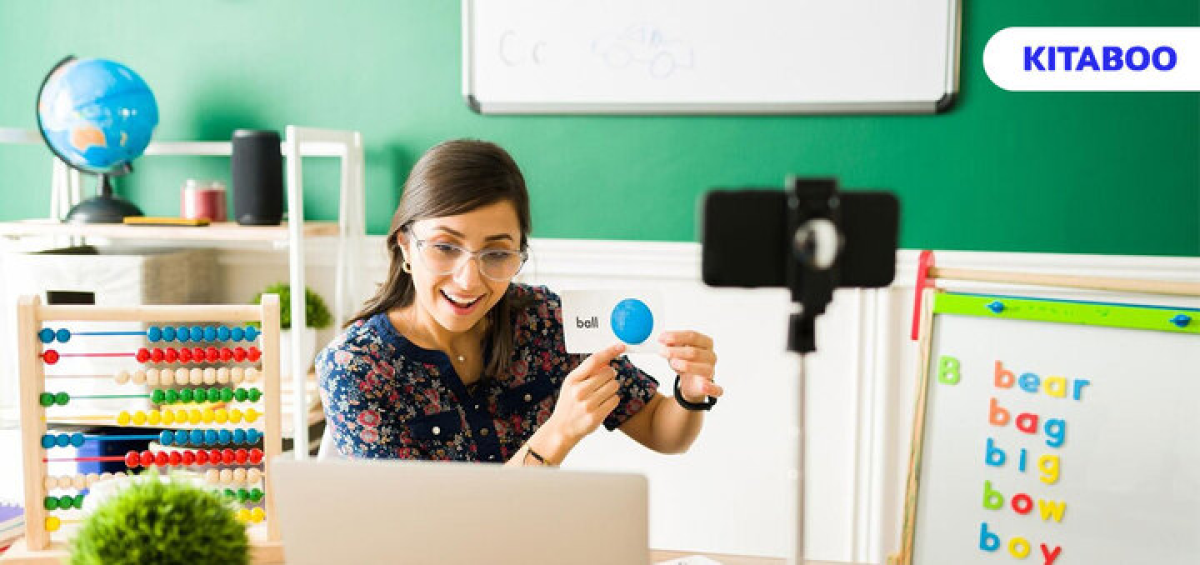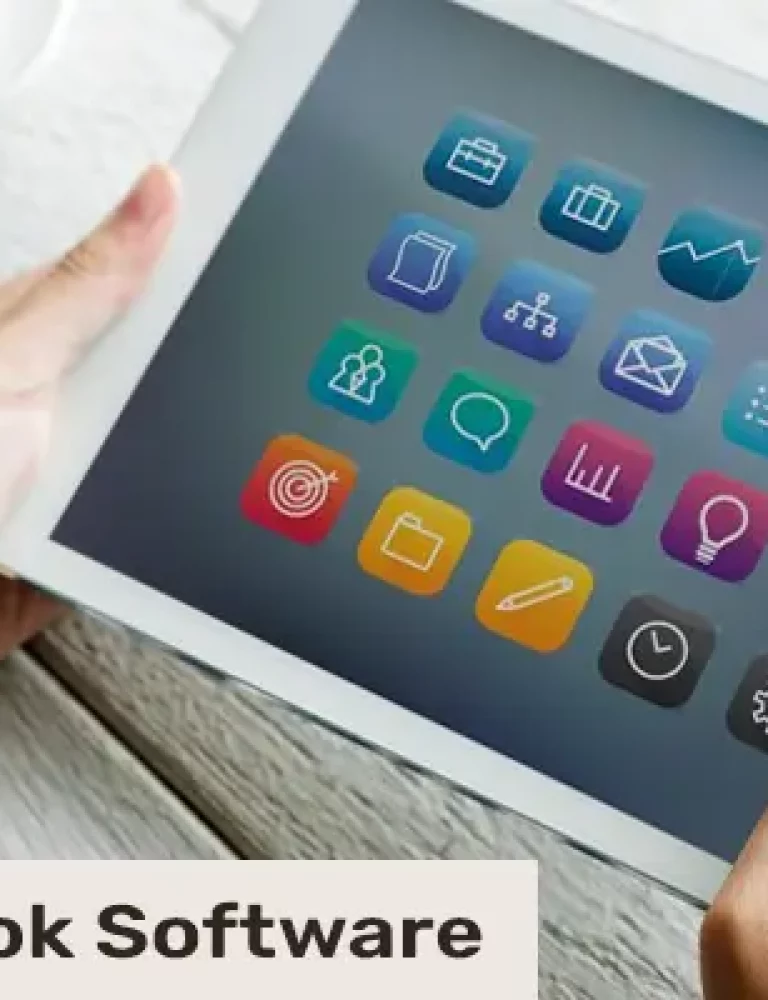Capturing students’ attention during lectures is a common challenge for educators. With diverse learning styles among students, adapting the curriculum to suit everyone can be tricky. In this context, employing interactive teaching methods can be helpful in enhancing the effectiveness of lessons.
By incorporating a more hands-on approach toward teaching and learning, interactive methods have the potential to transform a passive classroom into an active learning environment.
Digital platforms like KITABOO help educators implement interactive strategies and facilitate the integration of interactive teaching methods but also provide a versatile toolkit to enrich the learning experience.
Table of Contents:
I. What is Interactive Teaching?
II. 4 Benefits of Interactive Teaching
- Better Engagement
- Enhanced Critical Thinking
- Improved Retention
- Improved Teacher-Student Relationship
III. 4 Unique Ways to Implement Interactive Teaching in Classrooms
IV. Conclusion
What Is Interactive Teaching?
Interactive teaching is a dynamic educational approach that involves students in the learning process, which fosters heightened engagement and participation in the long run.
By using techniques such as Q&A sessions and quizzes, teachers incorporate a more hands-on approach to retain student attention in the lesson.
In essence, interactive teaching goes beyond traditional lecturing. It transforms the classroom into an interactive space where students are not passive recipients of information but are encouraged to apply critical thinking skills in diverse ways.
Rather than relying solely on theoretical approaches, interactive teaching encourages educators to use experiential tools that immerse students in learning.
4 Benefits of Interactive Teaching
Below are the top 4 benefits of interactive teaching that make it a game-changer in the classroom:
1. Better Engagement
The level of student engagement is linked to the flexibility of the learning environment and the encouragement educators provide for student questions and feedback.
In one study, the researchers discovered that the more a teacher discourages rote learning, the better the results are in a students’ creative improvement in a lesson. This highlights the crucial role of interactive teaching in fostering better engagement.
2. Enhanced Critical Thinking
Interactive teaching techniques employ activities that encourage students to express themselves by participating in classroom activities. It helps them form independent perspectives toward approaching and solving a problem, enhancing their capacity for critical thinking and application of fundamental concepts in the classroom.
It also involves encouraging open discussions around a topic in the classroom. The emphasis on open discussions around topics further nurtures a culture of critical thinking in the classroom.
3. Improved Retention
The challenge of retaining knowledge after a lecture is addressed through interactive teaching. The methods used in interactive teaching employ experiential learning, which stimulates enhanced learning in students, helping them retain more knowledge for a longer period of time.
The positive impact of interactive teaching on knowledge retention has been established through this study. This approach also warms up the class and establishes a deeper connection between teachers and students in the long run.
4. Improved Teacher-Student Relationship
Interactive teaching, with its emphasis on active discussions and Q&A sessions, transforms the teacher-student dynamic.
Teachers initiate Q&A sessions to warm the class up for a lesson, triggering critical thinking, logical reasoning, and analytical approaches in students’ minds. It helps create an active learning environment that far surpasses the engagements that passive learning is capable of.
Through active discussions, teachers and students are able to connect better with each other and match their learning-teaching wavelengths better.
4 Unique Ways to Implement Interactive Teaching in Classrooms
Listed below are four key techniques that educators can use to boost learning outcomes in a classroom:
1. Brainstorming
Brainstorming can be implemented in the classroom by dividing students into groups. This activity stimulates critical thinking and creativity in students by enabling them to come together and work at solving a problem.
Here are several types of brainstorming that teachers can guide students to apply:
- Reverse/negative thinking
- Structured and unstructured brainstorming
- Team-idea maps
- Nominal group relationships
- Individual brainstorming sessions
2. Think-Pair-Share
Think-pair-share is an excellent method to hone the independent thinking capabilities of each student while still working as a team. This involves pairing students in groups of two, giving them a problem, and allowing them time to form their own solutions.
Once the time is up, the teachers request each student to present their case to their partner. Teachers can also have them share their solutions with the entire classroom.
3. Q&A
Q&A sessions before or after a lecture are a great way of implementing interactive learning in classrooms.
Before you begin your lecture, request each student to jot down their thoughts and perspectives on the topic of the day, raising a query they wish to be resolved through the lesson.
Throughout the lesson, keep selecting each student’s query one by one to actively engage them in the classroom by solving it directly for them to see. Alternatively, you can conduct this session as a quick trivia to enhance classroom engagement and encourage active participation in your classroom.
4. Buzz Sessions
Buzz sessions are high-intensity active learning sessions that enable teamwork and knowledge sharing between students.
To implement this technique, teachers divide the classroom into groups of four to five students each. They give an exclusive topic from that day’s lesson to each group, and ask them to have a discussion internally about their perspectives, ideas, approaches, problems, and solutions.
Students are then encouraged to learn from each other and teach other groups about the concepts they have explored.
Conclusion
There are several methods of applying interactive teaching to a classroom, and all of them are extremely simple to implement using high-quality learning materials.
Educators can leverage the power of digital textbook platforms, like KITABOO, to create customized, interactive learning resources to apply during their interactive teaching sessions. It offers streamlined content creation, digital publishing, lesson analytics, and a lot of other handy tools that help teachers mark lesson progress individually for each student.
Write to us at KITABOO@hurix.com for more details!
Discover How An Ebook Conversion, Publishing & Distribution Platform Can Help You
Kitaboo is a cloud-based content platform to create-publish & securely distribute interactive mobile-ready ebooks.
You May Also Like
-
How to Design Learning Assessment for Students
Blog,Digital Publishing,eBook solution / February 28, 2024








